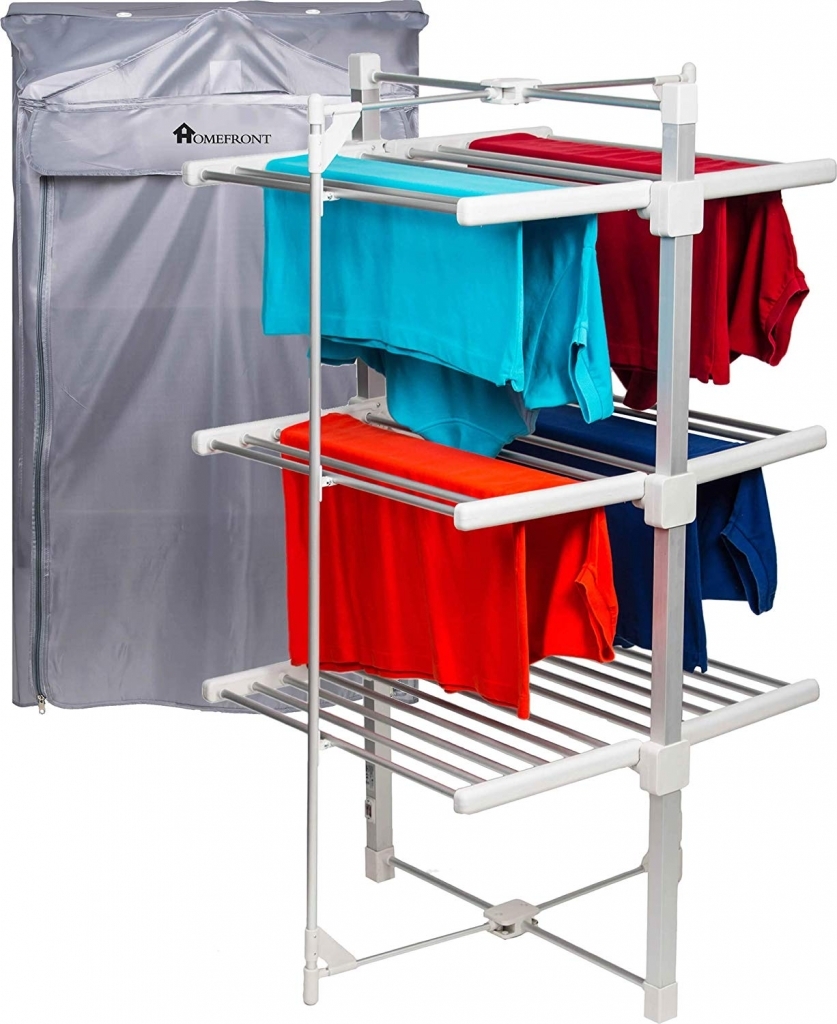
February 27th, 2020 by
An outdoor clothesline is a great way to get your washing dry but there are so many limitations: you’re totally dependent on the weather, you need to be around to bring it in if the weather changes and not everyone has outdoor space they can use. Being able to get your laundry dry inside the home is therefore essential for pretty much everyone, but what is the best way to dry washing indoors?
It may seem like a really simple thing but you do need to consider several factors: laundry care, efficiency, cost and impact on the environment to name a few. We take a look at the 4 most common methods of drying laundry and assess how they measure up against these considerations.
Tumble Dryer
 Using a tumble dryer is one of the most popular ways of drying washing indoors and they can be a good option. ‘A’ rated tumble dryers are pretty energy efficient, though obviously they cost a little more. One of the biggest issues with tumble dryers is that they can shrink your clothes which defeats the purpose of the exercise somewhat. There is also a safety issue: a few household brands have recalled their machines due to the risk of catching fire. It’s rare but the advice is not to use a dryer when you’re out of the house or in bed which does impact on convenience.
Using a tumble dryer is one of the most popular ways of drying washing indoors and they can be a good option. ‘A’ rated tumble dryers are pretty energy efficient, though obviously they cost a little more. One of the biggest issues with tumble dryers is that they can shrink your clothes which defeats the purpose of the exercise somewhat. There is also a safety issue: a few household brands have recalled their machines due to the risk of catching fire. It’s rare but the advice is not to use a dryer when you’re out of the house or in bed which does impact on convenience.
Radiators
Most people dry their clothes on radiators at least some of the time. Many use them for drying the delicates that they daren’t put in a tumble dryer and yes, it’s less likely to shrink your clothes but it does score poorly against the other factors mentioned above. The main problem with drying clothes on a radiator is that you will be compromising your central heating’s performance. The clothes will restrict the heat that is emitted by the radiator which either means you won’t get the heat in the room or your central heating will have to work harder and therefore use more energy (this increases costs and isn’t so good for the environment). You also run the risk of creating damp conditions due to the water vapour it releases in such close proximity to your walls.
Clotheshorse
This is probably the method your grandma may have used and, because it uses zero energy, it’s low cost and carbon neutral. It’s only really a good option if you can wait hours, if not days, for your clothes to dry though! Not the most efficient method unless you have plenty of clothes to wear in the meantime and LOTS of patience!
Electric clothes airer
 An electric clothes airer takes the best aspects from all of the above methods: it uses heat yet it’s cost-effective, safe and won’t damage your clothes. The principle is the same as a clotheshorse but the rails are heated by electricity. An energy-efficient electric airer only costs around 4p per hour to run and you can fit a lot more items on them than on a radiator (plus they’re compact so great for space-saving and it means you don’t have washing drying all over the house). You might assume that only the parts of clothes that actually touch the heated rails would dry quickly but airers with a cover, such as this one, maximise the heat by circulating it around the whole unit. This dries clothes faster and also avoids dispersing any dampness into the immediate space. The gentle heat means that clothes don’t shrink or stiffen. They may not be as cheap as a clotheshorse to buy but they’re less than half the cost of a tumble dryer (and don’t make any noise for those with open plan kitchen or living areas!).
An electric clothes airer takes the best aspects from all of the above methods: it uses heat yet it’s cost-effective, safe and won’t damage your clothes. The principle is the same as a clotheshorse but the rails are heated by electricity. An energy-efficient electric airer only costs around 4p per hour to run and you can fit a lot more items on them than on a radiator (plus they’re compact so great for space-saving and it means you don’t have washing drying all over the house). You might assume that only the parts of clothes that actually touch the heated rails would dry quickly but airers with a cover, such as this one, maximise the heat by circulating it around the whole unit. This dries clothes faster and also avoids dispersing any dampness into the immediate space. The gentle heat means that clothes don’t shrink or stiffen. They may not be as cheap as a clotheshorse to buy but they’re less than half the cost of a tumble dryer (and don’t make any noise for those with open plan kitchen or living areas!).
The best way to dry clothes indoors may be subjective as we all have different priorities but we all want to balance functionality with energy efficiency and safety. Do your research and choose the best option for you.
Homefront Electric Heated Clothes Airer Drying Rack with Free Zip Cover
Price: £145.00
Buy Now
Blog written by Sarah Ainslie
Comments
Leave a reply
Your e-mail address will not be published. All fields are required



